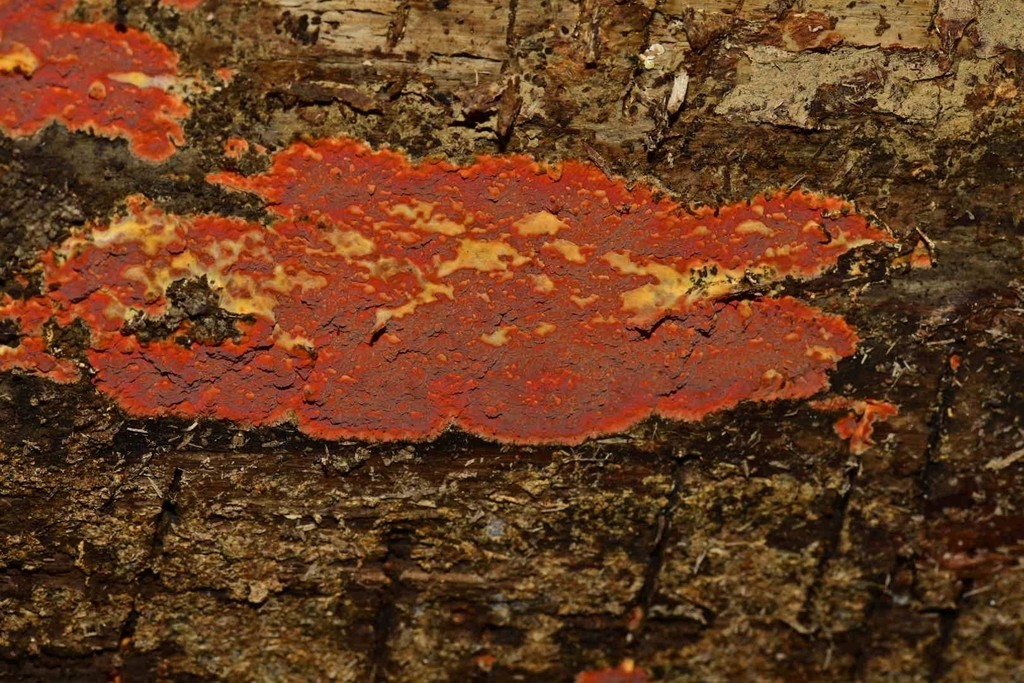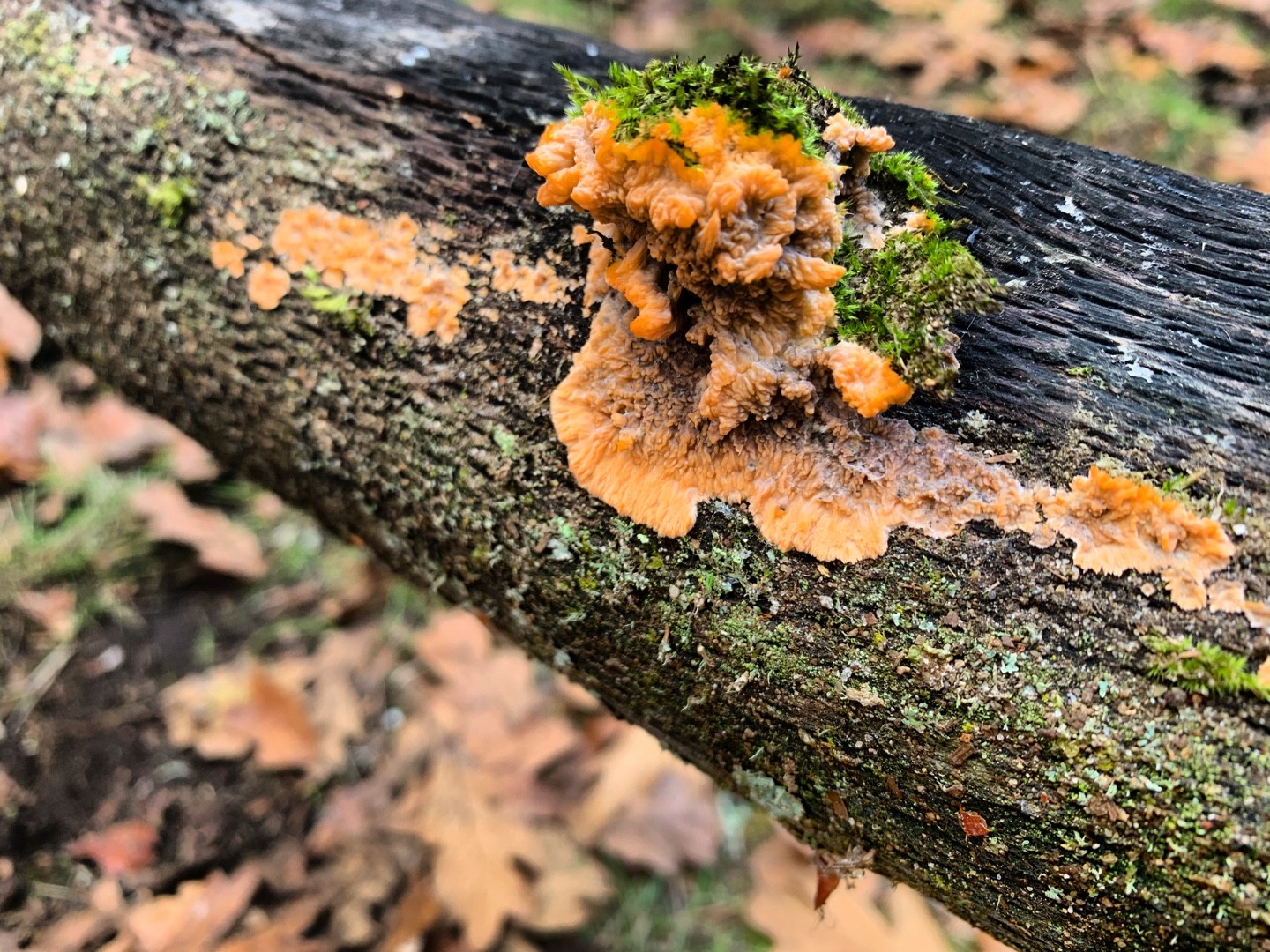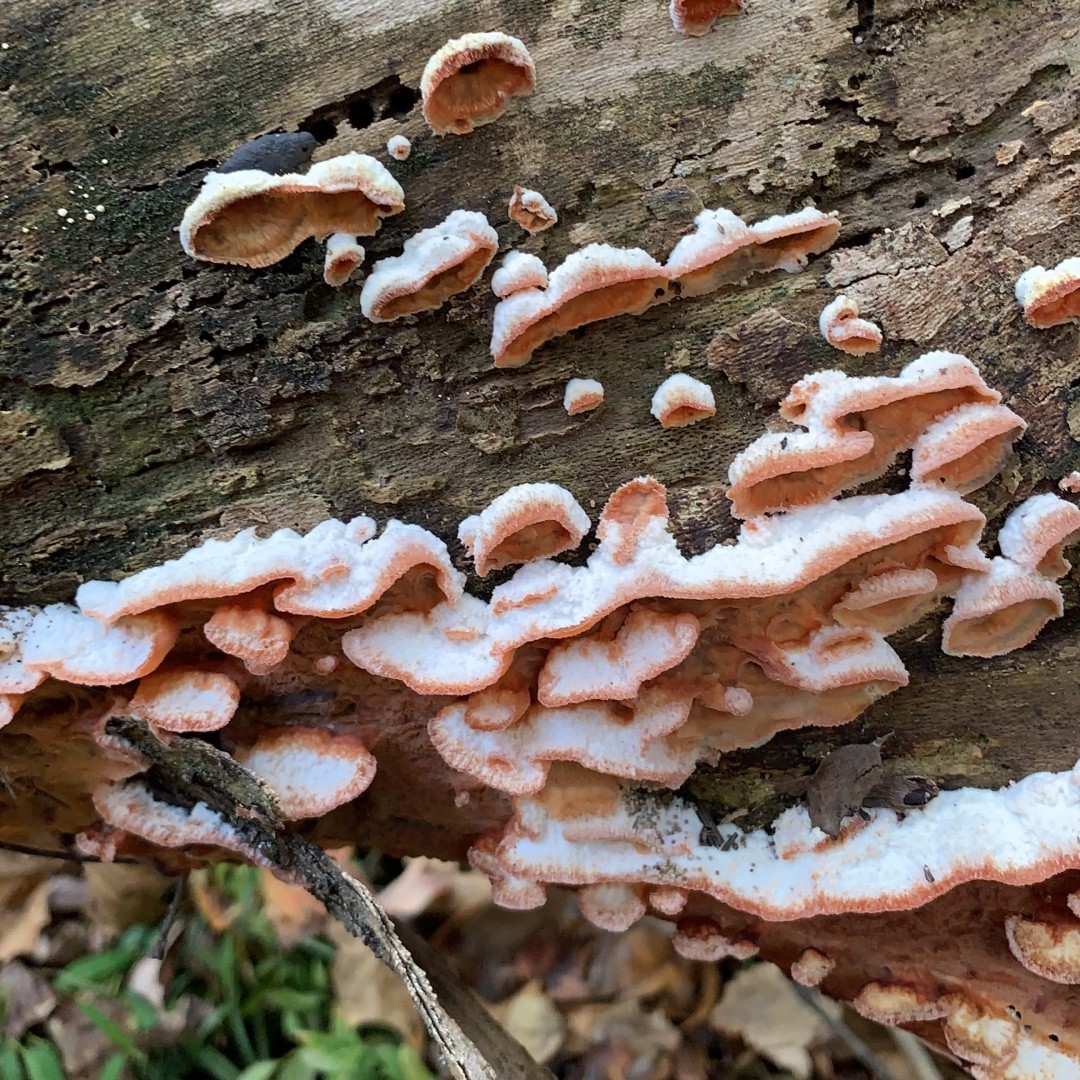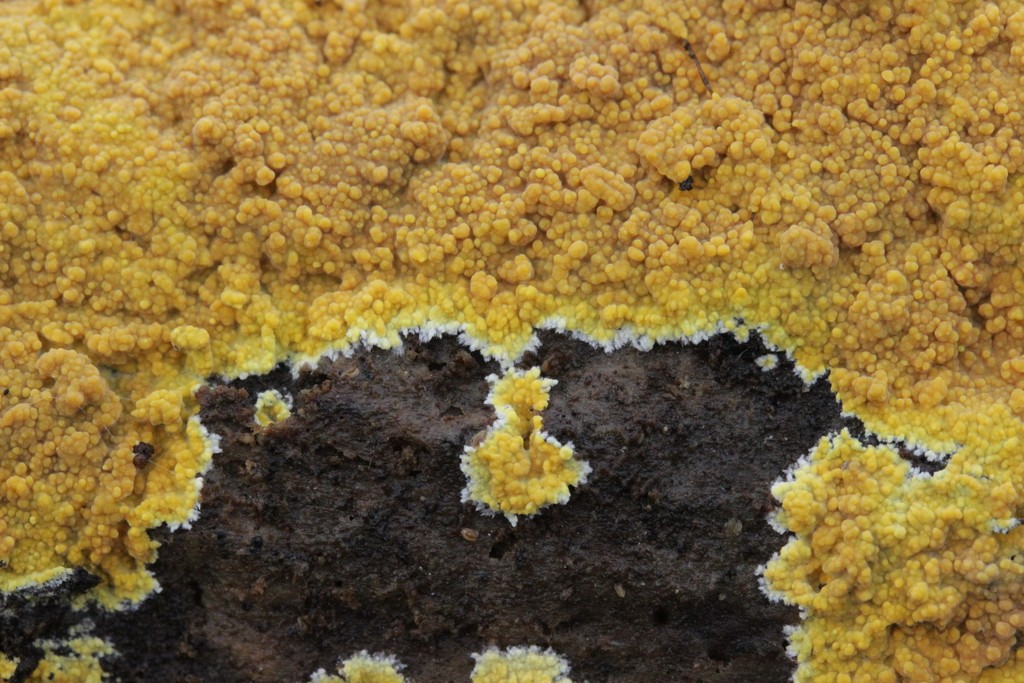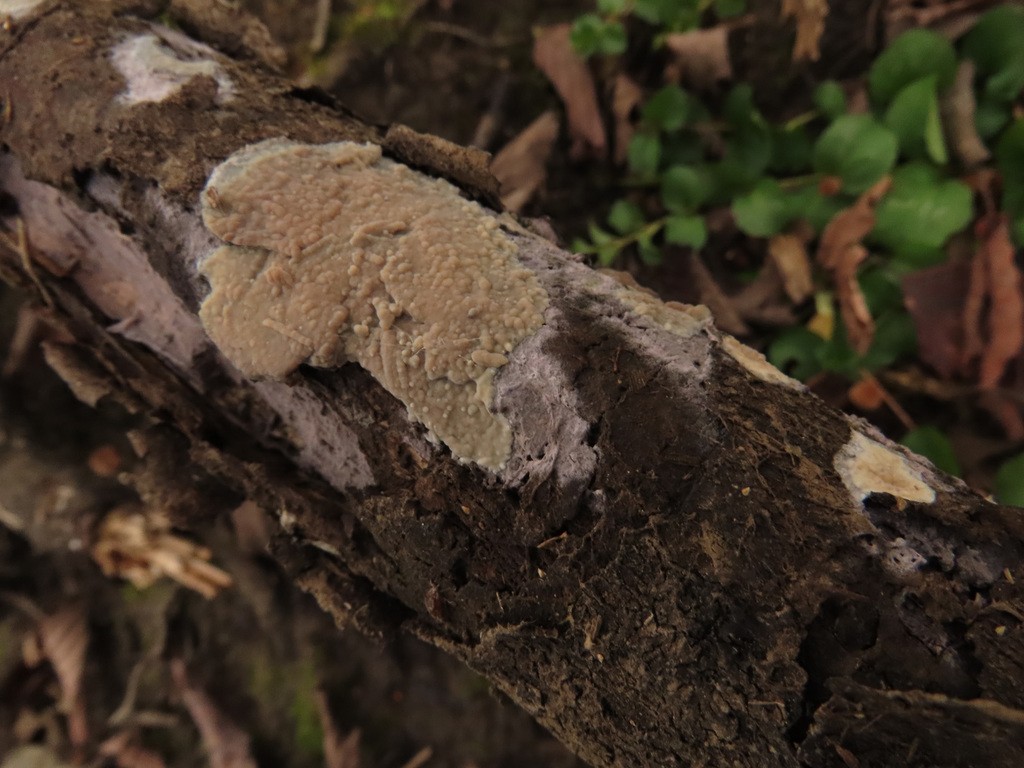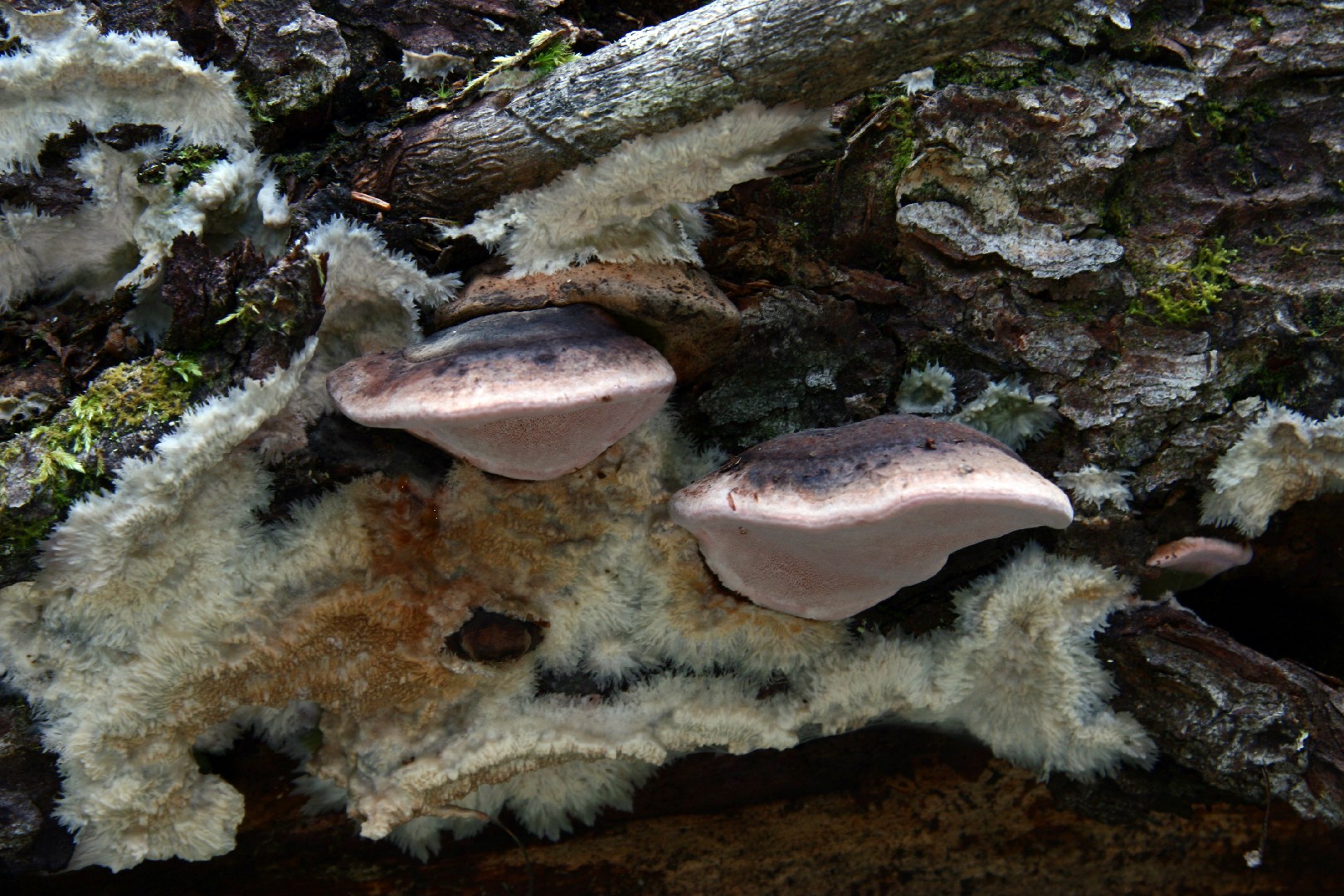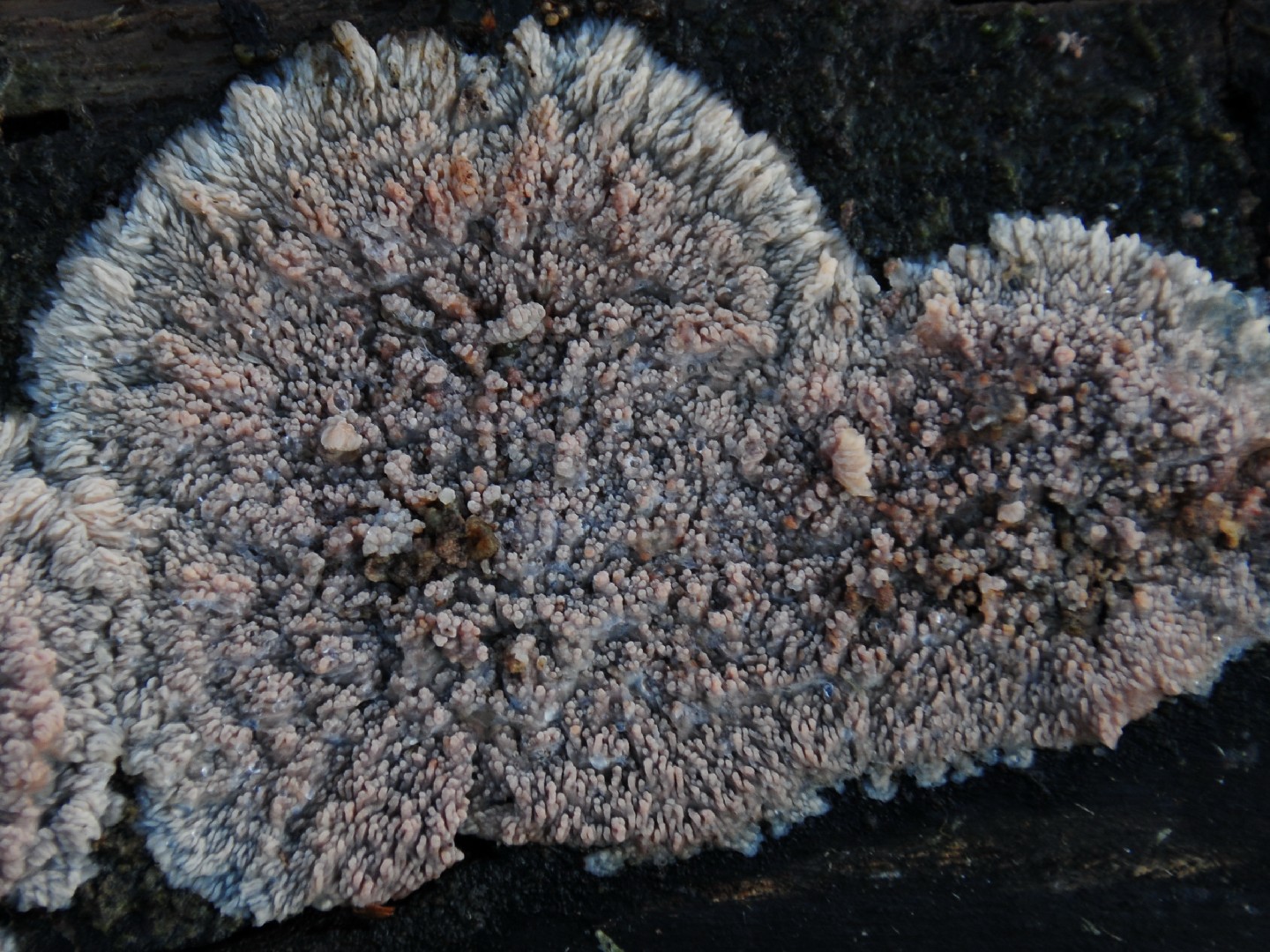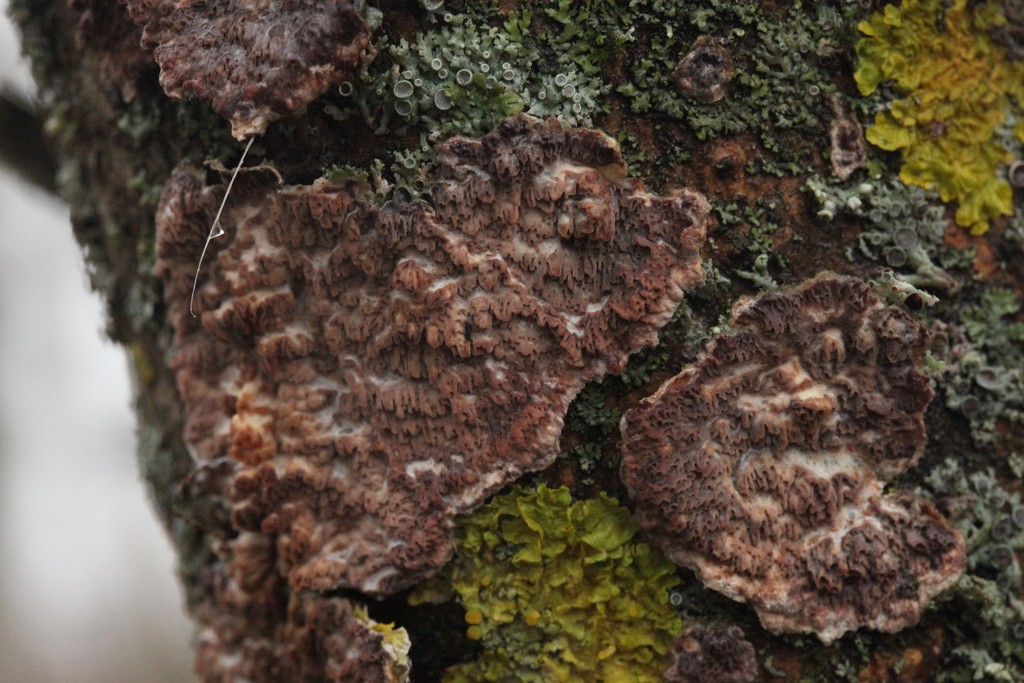Phlebia
Scientific name: Phlebia
Phlebia
Scientific name: Phlebia
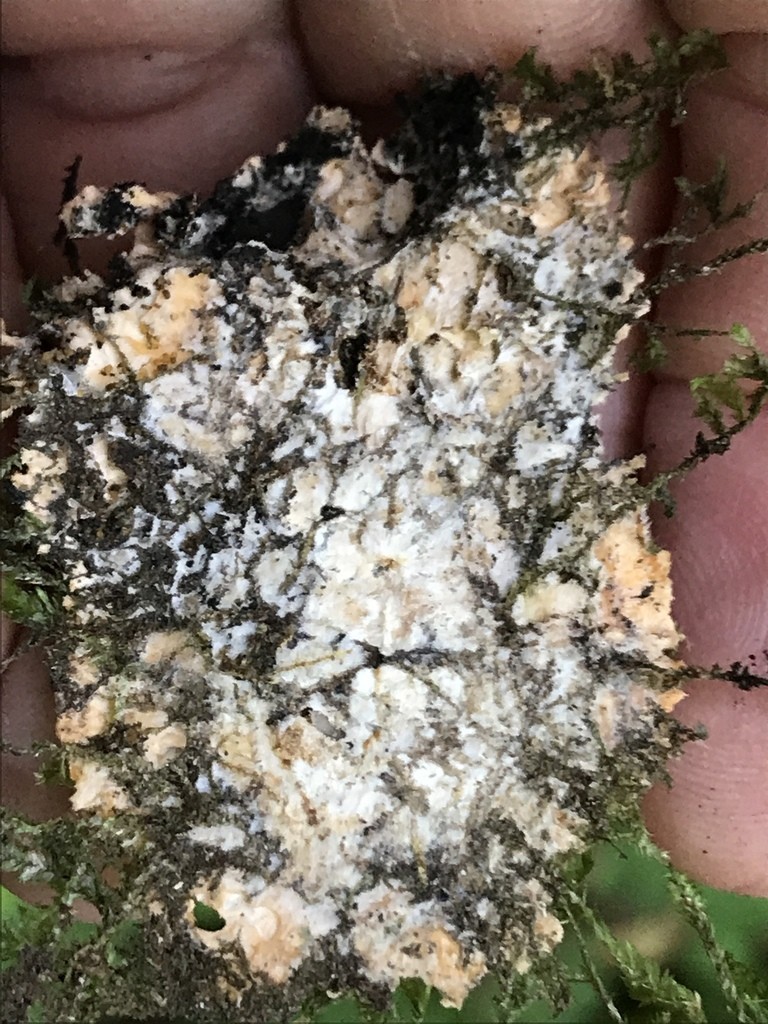 Photo By Jennifer Rycenga , used under CC-BY-4.0 /Cropped and compressed from original
Photo By Jennifer Rycenga , used under CC-BY-4.0 /Cropped and compressed from original Description
Phlebia is a group of decay fungi known for their role in breaking down wood in forests. These fungi have a unique, often colorful, crust-like appearance on decaying logs or stumps. Phlebia plays a crucial part in nutrient cycling by decomposing cellulose and lignin, which are tough components of plant cell walls. Some species within this group can produce strikingly bright orange or pink colors, adding vivid spots to the forest floor.
